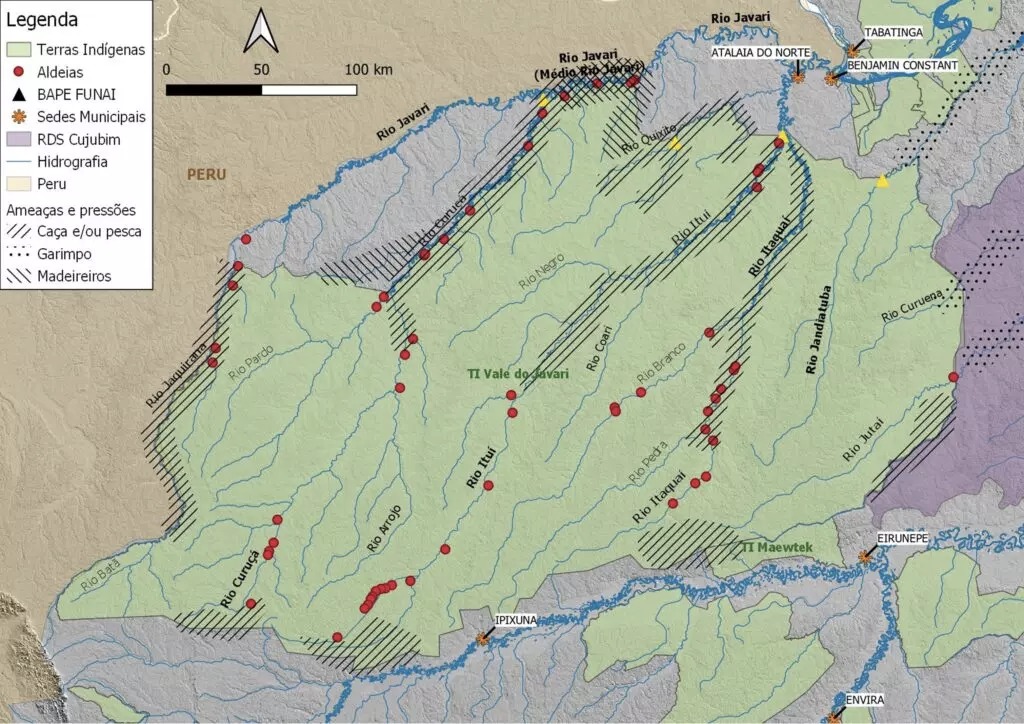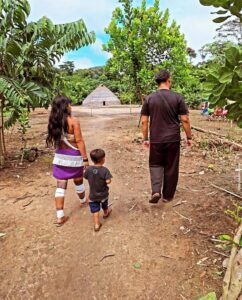The situation is worrying because, as the dry season nears, isolated people tend to approach villages and there is no way to warn the authorities to put protections in place
In the Vale do Javari Indigenous Territory, the second largest in the country and the one with the highest number of records of indigenous peoples in isolation, villages of the Kanamari people in the northern part of the territory are currently without any means of communication. The Javari Valley Indigenous Network, part of the Observatory for the Human Rights of Isolated and Recently Contacted Indigenous Peoples - Opi, believes an urgent solution is needed.
Opi's advisors are in the region and have found that of the 10 Kanamari villages, only five have access to radio communication. The other five have no access at all and are in a region where there is a strong presence of isolated peoples. The distance between these villages and the isolated malocas* varies from 8 to 14 kilometres.
The situation is worrying because, as the dry season approaches, isolated indigenous people tend to move closer to the Kanamari villages, for a number of reasons. The so-called Amazonian summer is the season when the rivers are at their lowest ebb, which leads to the appearance of beaches where tracajás - a quelonian that is much appreciated as food – spawn, and the isolated can move around the territory more easily.
This is the period when sightings of isolated indigenous people become frequent. The group called Warikama-dyapa (capybara people) by the Kanamari was given this name because they use the river beaches as do the capybaras. Other groups called Pida-dyapa (jaguar people) and Om-dyapa (frog people) also often appear. The appearance of isolated groups can lead to inter-ethnic conflicts or the spread of diseases.
That's why it's essential that the Kanamari villages have a way of communicating with the National Foundation for Indigenous Peoples (FUNAI), Union of Indigenous Peoples of the Javari Valley (UNIVAJA) and health authorities in the event of chance encounters with isolated groups who refuse contact. The river confluence of the Itaquaí, Jandiatuba and Jutaí rivers is the region of the Indigenous Land with the highest number of records of isolated groups, all of which are classified as confirmed by Funai.
The Kanamari leaders have already asked the government authorities and non-governmental supporters to take the necessary steps to acquire and install radio kits in the five villages that have no means of communication, but so far there has been no concrete response to their request. Acquiring radios won't solve the problem, which is why in May this year the Ethno-Environmental Protection Front of the Javari Valley began a dialogue on territorial sharing between the Kanamari and the isolated people in the villages on the Itaquaí River.
Maloca* - indigenous houses




